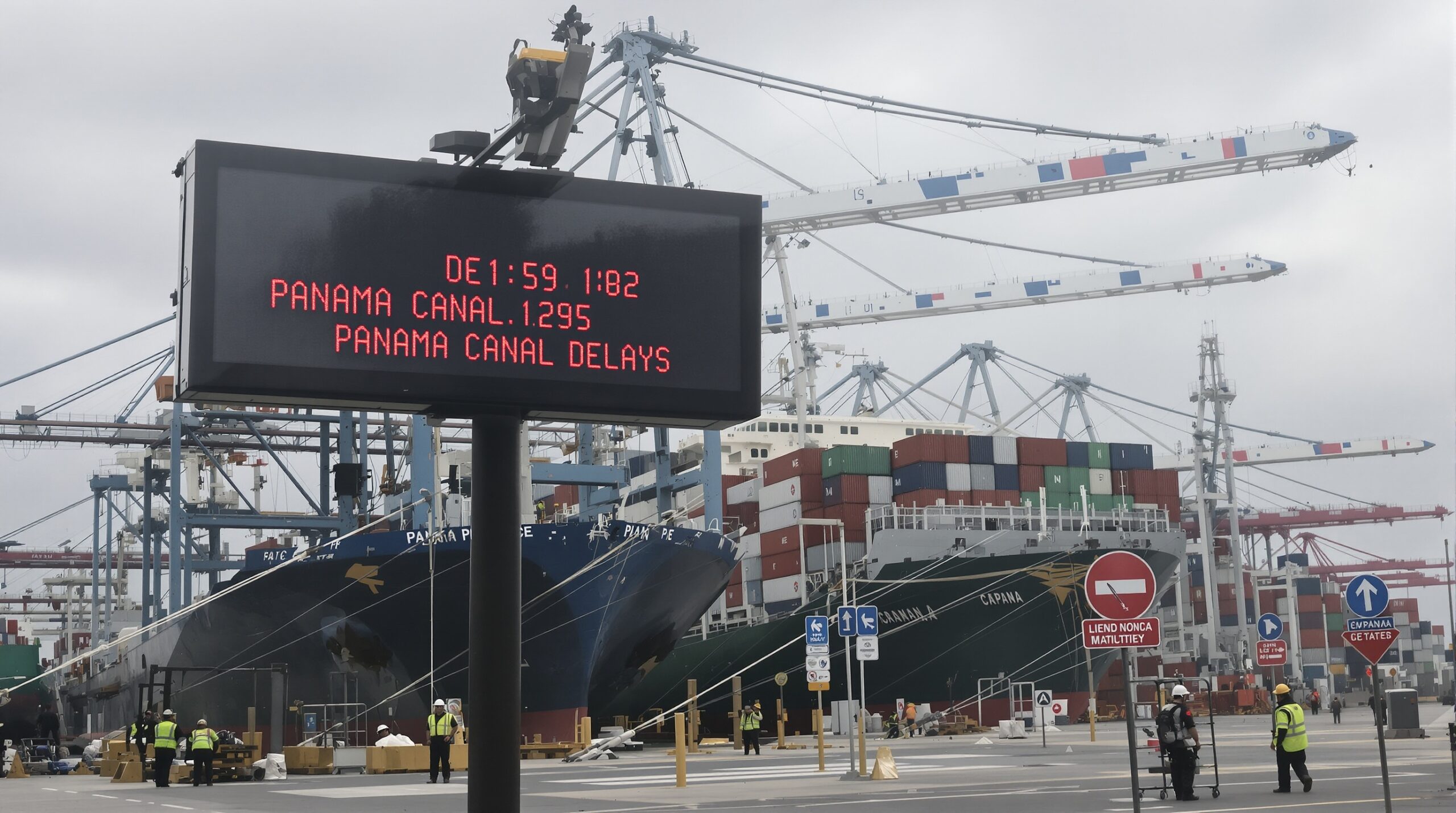Global shipping relies heavily on the Panama Canal, a vital link between the Atlantic and Pacific Oceans. However, new restrictions on canal transit are now causing concern for ports and supply chains worldwide. Stricter water usage rules and vessel passage limitations threaten to create disruptions, forcing ports to prepare for a significant operational shift.
Understanding the Panama Canal Constraints
The Panama Canal Authority has imposed new restrictions to manage a severe drought, limiting the number of daily vessel transits. Water levels at Gatún Lake, a key reservoir for canal operations, have dropped well below historical averages. The canal now allows fewer ships per day and enforces draft limitations, which reduce how much cargo vessels can carry per trip.
These measures are a response to environmental pressures that threaten the long-term viability of the canal’s operations. Canal authorities closely monitor lake levels and weather patterns, but forecasts predict that constraints could remain in place for months, possibly into next year.
Impacts on Ports Worldwide
Ports on both sides of the Panama Canal are experiencing delays as vessels wait longer for passage. Several major container ports in the Americas are particularly affected, including the Port of New York and New Jersey, the Port of Los Angeles, and the Port of Houston.
Longer transit and wait times cause ripple effects across the entire maritime supply chain. Ships may be forced to wait days, sometimes weeks, just to cross the isthmus. Port authorities are boosting communication with shipping lines and recalibrating schedules to mitigate potential congestion and berth shortages.
Adjusting Port Operations and Schedules
Port operators are ramping up efforts to adjust to fluctuating vessel arrival times. Some ports are extending gate hours, adding additional labor shifts, and increasing storage capacity to smooth out bottlenecks. Enhanced collaboration between cargo owners, logistics companies, and terminal operators seeks to optimize cargo flow in real-time.
To further support affected shippers, some ports are prioritizing vessels with perishable goods and critical supplies. This triage system is designed to reduce the impact of shipping delays on essential industries, such as food and healthcare.
Shipping Routes and Alternatives Explored
With tighter canal restrictions, several shipping lines are exploring alternative routes to maintain reliable delivery schedules. Some vessels are rerouting around South America’s Cape Horn, a detour that adds weeks and significant costs to each voyage. Others are redirecting cargo to the Suez Canal, although that path is also longer and exposes vessels to geopolitical uncertainty.
Freight companies are quickly analyzing cost-benefit scenarios for rerouting versus enduring Panama Canal delays. Each option presents distinct challenges related to transit times, fuel costs, and potential weather dangers.
Pricing Pressures and Freight Rate Fluctuations
The shipping delays and alternative routing strategies are driving up freight rates. Some container and bulk carriers are adding surcharges for canal passage or late arrivals. This has produced new volatility in shipping contracts and overall logistics budgets, especially for companies reliant on ‘just-in-time’ inventory strategies.
Industry analysts report that rates for the Asia-to-Americas route have risen sharply in response to the canal restrictions. Shippers should prepare for continued fluctuations, as forwarders adjust pricing and capacity planning to compensate for operational uncertainty.
Environmental and Climate Challenges
Climate change plays an undeniable role in the Panama Canal’s operational constraints. Rainfall patterns in Panama have become less predictable, putting stress on water reservoirs critical for canal operations. Scientists warn that these trends are likely to persist, and canal management will require ongoing adaptation.
Ports located along affected trade routes are now drawing up contingency plans for more frequent disruptions. Some are evaluating the feasibility of investing in sustainability solutions, including water-saving technologies, shore-side power, and emissions-cutting vessel operations.
Cooperation Across the Global Supply Chain
No single port or company can tackle these supply chain disruptions alone. Collaboration is underway among governments, terminal operators, shippers, and industry associations. Digital platforms now provide real-time updates on canal wait times, vessel locations, and projected port arrivals, boosting transparency for all stakeholders.
The World Shipping Council and International Chamber of Shipping are advocating for international coordination to ensure equitable access to canal slots. Their call for fair and predictable allocation systems underscores the need for unified action in times of crisis.
Short- and Long-Term Solutions
To manage disruptions, ports are deploying crisis response teams and investing in agile operational systems. Flexible scheduling, expanded warehousing, and enhanced notification systems are alleviating some acute pressures. At the same time, industry groups press for long-term infrastructure and water management projects in Panama to safeguard future canal reliability.
Shipping technology providers are accelerating work on smarter vessel tracking, automated terminal management, and alternative fuel solutions. Stakeholders increasingly recognize that resilience requires innovation, investment, and partnership on a broad international scale.
What Lies Ahead for Ports and Shippers
The Panama Canal crisis highlights vulnerabilities that global ports and supply chains cannot ignore. Operational, financial, and environmental risks are now driving urgent changes in maritime strategy. Stakeholders remain cautious but proactive, aware that drought-related restrictions require better planning, coordination, and communication across all links in the chain.
Over the coming months, ports will continue to monitor canal operations and adjust response plans accordingly. Flexibility, visibility, and cooperation will remain critical as the world navigates a more uncertain shipping landscape.


